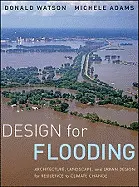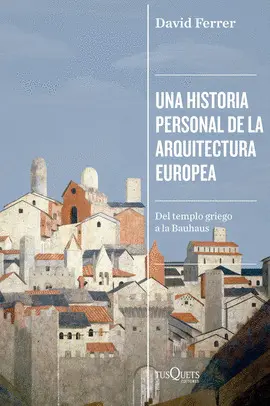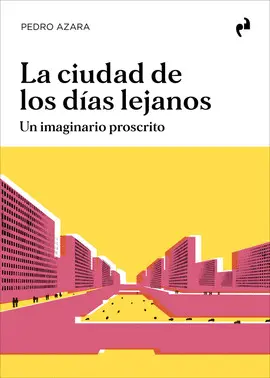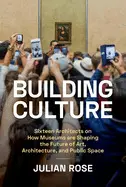- Editorial:
- WILEY
- Materia:
- Arquitectura
- ISBN:
- 978-0-470-47564-5
DESIGN FOR FLOODING
ARCHITECTURE LANDSCAPE, AND URBAN DESIGN FOR RESILIENCE TO CLIMATE CHANGE.
DONALD WATSON / MICHELE ADAMS
The complete guide to planning and design for water sustainability, as well as flooding and natural disasters
Architects, urban planners, and urban designers, as well as water resources engineers and landscape architects will discover that "Design for Flooding" presents the best practices and lessons to create buildings and communities that are more resilient in the face of severe weather, climate change, and the prospect of rising sea level.
"Design for Flooding" covers technical and institutional issues--along with new design and business opportunities--built upon:
Fundamentals of climate and weather, stormwater and floodplain management
Best practices of flood-resistant design and adaption to sea level rise
Multidisciplinary design that integrates sound ecological and engineering principles
Innovative design and construction to protect and improve water security
""Design for Flooding" defines the need and opportunity for planners, architects, landscape architects, engineers, and conservation biologists to work together to develop the mix of inland and coastal flooding solutions required for a comprehensive response to climate change."
--From the Foreword by Daniel Williams, FAIA, author of Sustainable "Design: Ecology, Architecture, and Planning"
""Design for Flooding" should be a major tool for the design professions, for public agencies, and for civic activists, indeed for everyone who wishes to bring a genuinely 'intelligent' design for water to their communities. It is a call to action and demonstrates that we have the knowledge, the tools, and the capability to better manage the water system on which we depend."
--From the Foreword by Carol Franklin, FASLA
A portfolio of award-winning designs illustrates practical and visionary projects to prepare for a resilient future, including:
A case study of Climate's Long-term Impacts on Metro Boston (CLIMB) analyzes four alternatives to prepare for climate change
A design charrette sponsored by The Regional Plan Association of New York illustrates creative concepts for waterfront revitalization and flood protection
Lessons from the Netherlands, Japan, and the United States indicate the effectiveness of long-term preparedness planning combined with phased mitigation and renewal projects
Examples include renovations and small buildings, showing how every project at any scale is a design opportunity to increase the sustainability and resilience of our communities, water, and ecosystem services
Table of Contents:
Preface and Acknowledgments.
Foreword ("Carol Franklin, RLA, FASLA")
Foreword ("Daniel E. Williams, FAIA").
Introduction.
PART I: NATURE OF WATER.
Chapter 1: Weather.
1.1 Sun and Earth.
1.2 The Atmosphere.
1.3 Weather.
Chapter 2: Land and Water.
2.1 Water and Carbon Cycles.
2.2 Biodiversity and the Landscape.
2.3 Follow the Water: The Opportunity for WatershedPlanning.
Chapter 3: Flooding.
3.1 Flooding from Increased Precipitation.
3.2 Flooding from Severe Storms.
3.3 Economic and Social Costs of Water-Related NaturalDisasters.
PART II: DESIGN WITH WATER.
Chapter 4: The Natural Landscape.
4.1 Understanding the Natural Water Balance.
4.2 When the Water Balance Is Altered.
4.3 Soils and Vegetation.
4.4 Subsurface Water Movement.
4.5 Stream Systems, Wetlands, Riparian Zones, andFloodplains.
Chapter 5: The Altered Landscape.
5.1 When the Landscape Is Altered.
5.2 Altered Stream Systems and Increased Flood Damage.
5.3 Why Detention Does Not Solve Flooding.
5.4 Summary: The Natural Landscape as a Model for ResilientDesign.
Chapter 6: Design for Inland Flooding.
6.1 Resilient Design for Inland Flooding.
6.2 Tools for Watershed Protection.
6.3 Communities and Buildings in Floodplains.
PART III: FLOOD-RESISTANT DESIGN.
Chapter 7: Flood Design Analysis.
7.1 Definition of Terms.
7.2 Flood Elevation: Base Flood and Design Flood.
Chapter 8: The Coast.
8.1 Coastal Processes.
8.2 Shoreline Protection.
8.3 Flood Barriers and Floodgates.
8.4 Summary of Coastal Protection Measures.
Chapter 9: Flood Design Practices for Buildings.
9.1 Overview of Flood Design.
9.2 Flood Design at the Building Scale.
PART IV: DESIGN FOR RESILIENCE.
Chapter 10: Flood-Resistant Design for Sites andCommunities.
10.1 Coastal Communities.
10.2 Comprehensive Planning for Resilient Communities.
10.3 Local Actions to Build Community Resilience.
Chapter 11: Sea Level Rise.
11.1 Sea Level Rise: The Issues.
11.2 Sea Level Rise: Design Responses.
Chapter 12: Design for Resilience.
12.1 The Wave of the Future.
12.2 Models for National and International Action.
12.3 Design Resolution.
Epilogue.
Glossary.
Index.
Biographical Note:
Donald Watson, FAIA, an architect and planner, is formerchair of the Yale School of Architecture Environmental DesignProgram, and former professor and dean of the School ofArchitecture, Rensselaer Polytechnic Institute. He received the2002 ACSA Distinguished Professor Award and the 2005 AARC HaeckerLeadership Award for Architectural Research. His publicationsinclude "Climatic Building Design," winner in the Architectureand Urban Planning category of the American Publishers Award forProfessional and Scholarly Excellence.
Michele Adams, P.E., a water resources engineer, isprincipal and founder of Meliora Environmental Design in Kimberton, Pennsylvania. Her work encompasses environmentally sensitive sitedesign and sustainable water resources engineering.
Marc Notes:
Includes bibliographical references and index.
Review Citations:
Choice 07/01/2011 (EAN 9780470475645, Hardcover)
Reference and Research Bk News 02/01/2011 pg. 204 (EAN 9780470475645, Hardcover)
Contributor Bio: Watson, Donald
DONALD WATSON, FAIA, is Professor and Dean Emeritus of the School of Architecture, Rensselaer Polytechnic Institute, Troy, New York and honored as ASCA Distinguished Professor, 2002. His books include Climatic Building Design, co-authored with Kenneth Labs, (McGraw-Hill 1983, revised 1993), recipient of the Best Book in Architecture and Planning Award from the American Publishers Association. He is editor-in-chief of Time-Saver Standards for Architectural Design Data (7th edition, 1997) and Time-Saver Standards for Building Materials and Systems (2000).
ALAN PLATTUS is Professor of Architecture and Urbanism at Yale University School of Architecture. He founded and directs the Yale Urban Design Workshop, a community design center that has worked with cities, towns and neighborhoods throughout the region. He also directs the Yale China Studio, working with universities in China on urban design issues in rapidly developing cities. He has published widely on the history and theory of architecture and urbanism, and edited the new edition of Hegemann and Peets classic text, The American Vitruvius.
ROBERT G. SHIBLEY, AIA, AICP, is a professor of architecture and planning at the School of Architecture and Planning, University at Buffalo, State University of New York. He is the Director of the Urban Design Project, a center for the study and practice of urban design. He also is the co-author of seven books including Urban Excellence with Philip Langdon and Polly Welsh (1990), Placemaking: The Art and Practice of Building Communities with Lynda Schneekloth (1995), and Commitment to Place: Urban Excellence and Community (2000).
Contributor Bio: Adams, Michele
I have been a speech writer for many years and have always had a passion for writing, particularly humour. Being a parent of two I have drawn on my life experiences as inspiration for this book and many situations within the book and character have been my own personal experiences and I'm sure will be appreciated by many a parent of young children.








